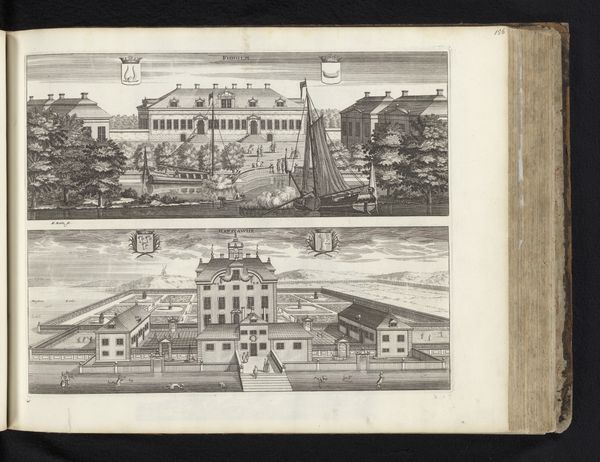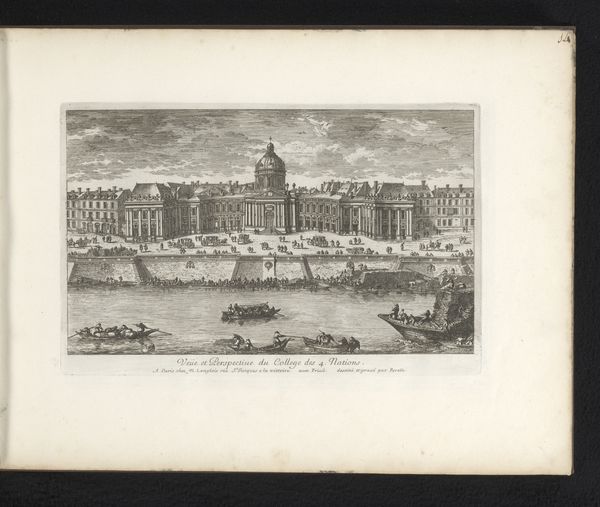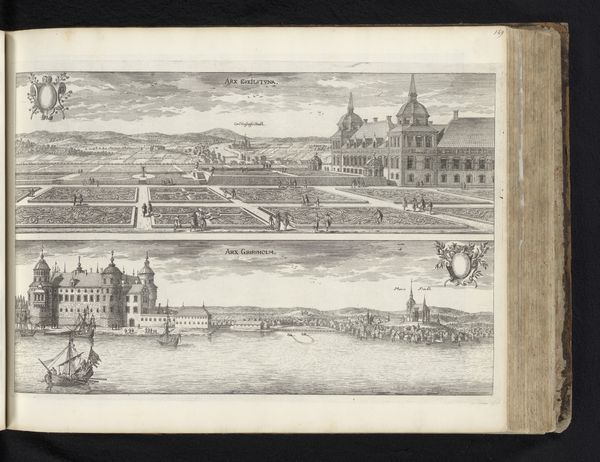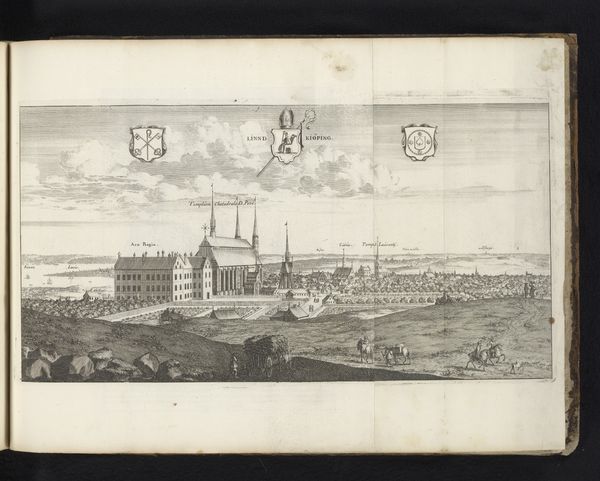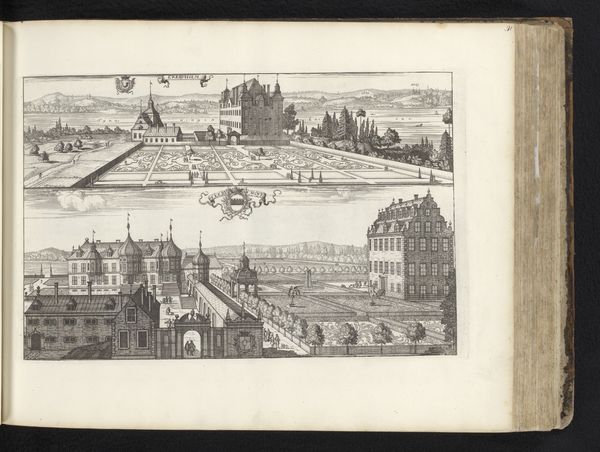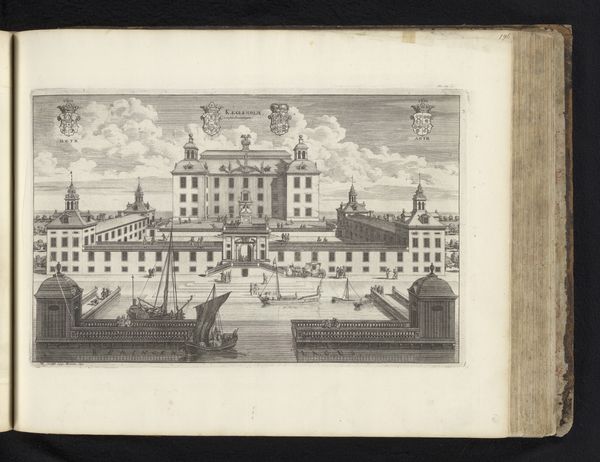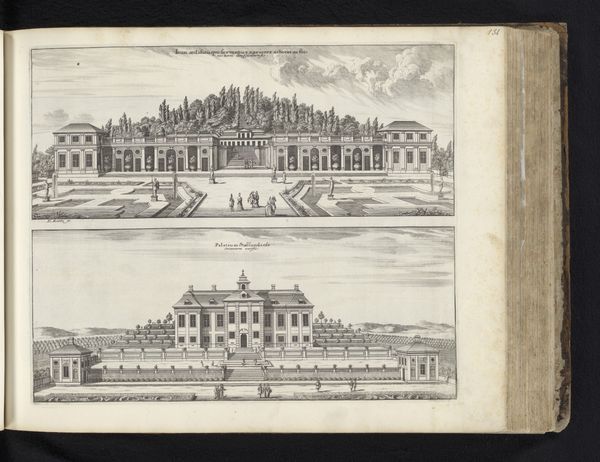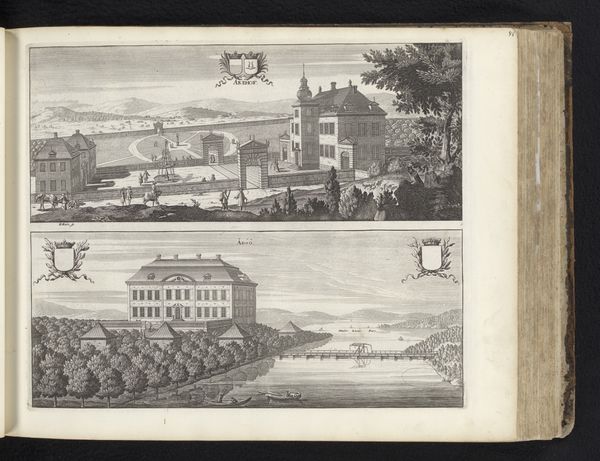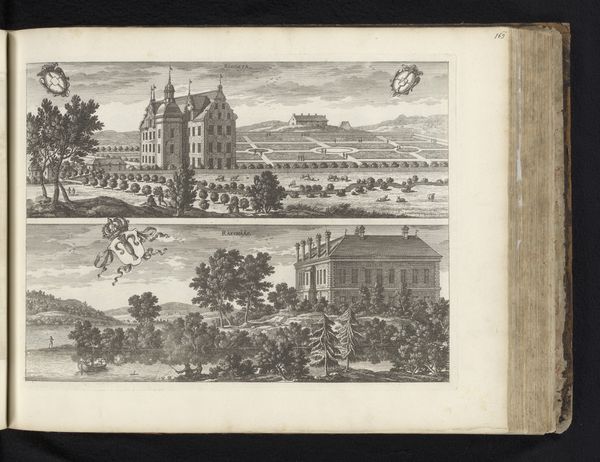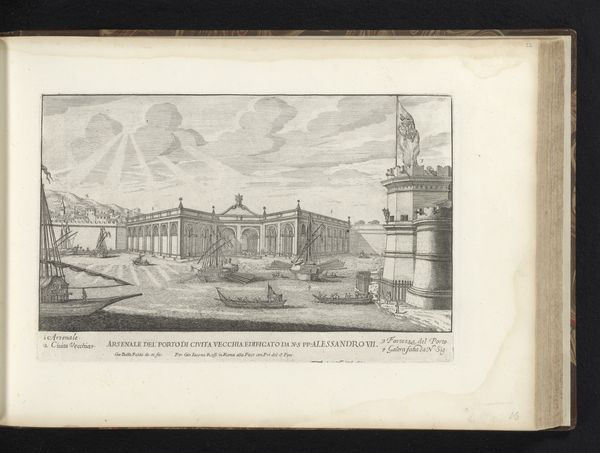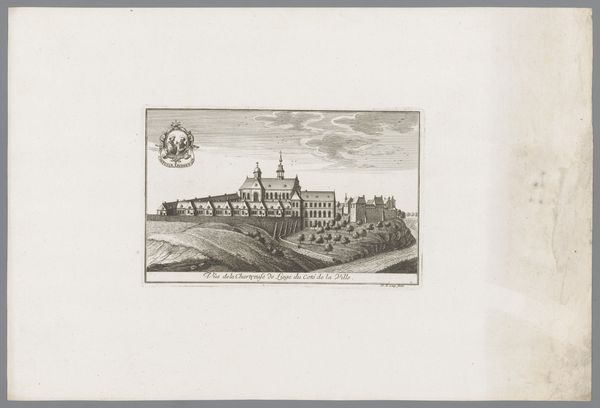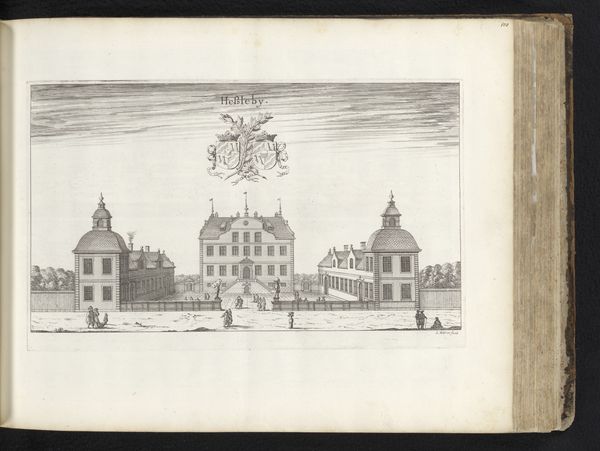
drawing, ink, engraving
#
drawing
#
baroque
#
dutch-golden-age
#
landscape
#
ink
#
cityscape
#
engraving
Dimensions: height 205 mm, width 336 mm
Copyright: Rijks Museum: Open Domain
Curator: This ink and engraving drawing, titled "Gezicht op herenhuis Tuna," created around 1694 by Erik Reitz, provides an intriguing glimpse into a Dutch Golden Age cityscape. The attention to detail immediately strikes me, even within the limits of the etching technique. Editor: The level of precision in the line work is astounding, especially given the period it comes from, there’s almost a dreamlike quality to it, even though it feels photorealistic; what does the name "Tuna" refer to in this image, as the composition gives the central mansion great import? Curator: The engraving depicts a Swedish manor house and "Tuna" is likely a reference to the name of that estate; and, thinking of period symbolism, notice the ornamentation at the top; could those interlocking crescents refer to continuity between generations and landed titles? What I really love about the work, though, is how Reitz captures the still reflection of the estate and the billowing smoke that signals vitality on a human scale. Editor: Definitely, it feels rooted in power dynamics, reflecting the control over land, life, and capital. The boats on the water seem almost like miniatures, dominated by the architecture. Do you feel this grandeur is intentional? Curator: Absolutely! I believe Reitz utilizes recognizable visual cues that remind viewers of a time in which powerful aristocrats reigned supreme. By memorializing that power, perhaps we gain some greater insight into ourselves. The eye moves over the symmetry of buildings, water, and open sky in almost perfect proportion. This piece reminds us of the weight of cultural inheritance. Editor: It feels constructed for posterity, with that almost self-aware gesture, acknowledging how these portrayals uphold a system that might easily oppress. I can see this playing with the very nature of identity. Curator: Perhaps, then, a cycle: those who understand it begin to shape and then uphold the symbols of power. Well, however we view it through our contemporary sensibilities, the piece clearly reflects enduring anxieties about cultural power, privilege, and lasting legacy. Editor: Agreed. It presents, challenges, and provokes reflection about class and identity. What more can we ask from art?
Comments
No comments
Be the first to comment and join the conversation on the ultimate creative platform.

